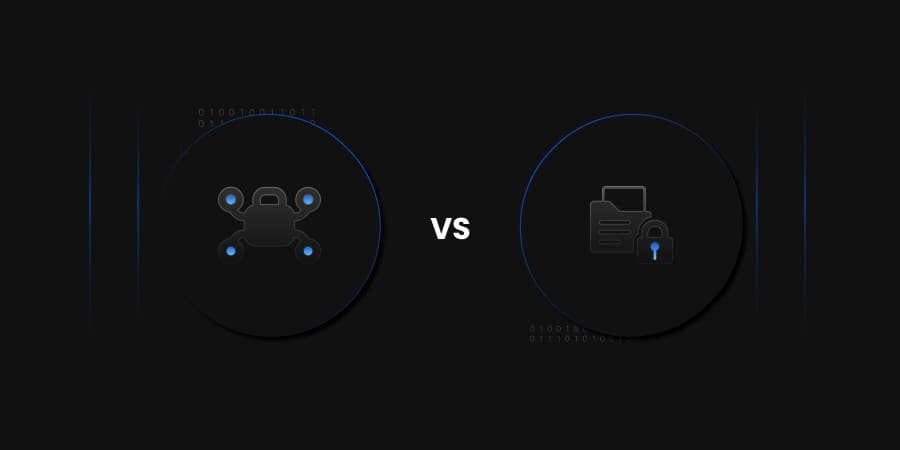Introduction
The adoption of technology is a must to keep data safe throughout each stage of its lifecycle. Organizations can choose from data protection methods such as encryption, masking, tokenization, etc, but they often face difficulty in deciding on the right approach.
A common misconception within the data community is that encryption is considered a form of data masking. In this article, we will provide an overview of encryption and data masking, and show how they differ from each other.
Definitions
Encryption works by encoding the original data, or plaintext, with the help of sophisticated algorithms that convert it to unreadable text or ciphertext. A decryption key would be needed to revert the ciphertext to a readable format. Encryption is used to protect sensitive data, such as payment card information (PCI), personally identifiable information (PII), financial account numbers, and more.
Data masking, also called data obfuscation, is a data security technique to hide original data using modified content. The main reason for applying masking to a data field is to protect data that is classified as PII, sensitive personal data, or commercially sensitive data. However, the data must remain usable for the purposes of undertaking valid test cycles. Data masking meets the requirements of most privacy laws including GLBA, HIPAA, GDPR, PCI DSS, PIPEDA, CCPA, etc.
There are a few different types of masking. Below is a look at the three main types of data masking:
Static Data Masking
Static data masking refers to the process in which important data is masked in the original database environment. The content is duplicated into a test environment, and can then be shared with third-party vendors or other necessary parties.
Dynamic Data Masking
In dynamic data masking, automation and rules allow IT departments to secure data in real-time. That means it never leaves the production database, and as such is less susceptible to threats.
On-the-fly Data masking
Like dynamic data masking, on-the-fly data masking occurs on demand. In this type of data masking, and Extract Transform Load (ETL) process occurs where data is masked within the memory of a given database application. This is particularly useful for agile companies focused on continuous delivery.
How does data masking works?
Every single business has sensitive data, whether they are trade secrets or employees’ social security numbers, thus all sensitive data must be protected. Data masking obscures sensitive information and replaces it with proxy data.
Data masking works by shielding confidential data, such as credit card information, social security numbers, names, addresses, and phone numbers, from unintended exposure to reduce the risk of data breaches. It minimizes the risk of data breaches by masking test and development environments created from production data, regardless of the database, platform, or location.
Data masking technology can integrate with existing authentication solutions, including Active Directory, LDAP, and Identity Access Management software, and it complements other data protection technologies such as encryption, database activity monitoring (DAM), and security information and event management (SIEM), collectively providing comprehensive data privacy protection.
Data Encryption Vs. Data Masking
One of the most valuable tools of data masking is that once the information is masked, it is irreversible. Using the employees’ example above, you would not want to make a client’s credit card or banking information available to people working at your call centers. This would expose your clients to identity theft and your business to potential litigation. Your employees will still be able to read some of the information but will not be able to unmask what you have obfuscated.
With encryption, information is completely scrambled and illegible to anyone who sees it. However, the intended recipient would be able to unscramble the information once it is received.
Encryption is ideal for storing or transferring sensitive data, while data masking enables organizations to use data sets without exposing the real data. Whichever method gets used, it is essential that the encryption keys and algorithms used to mask data are secured to prevent unauthorized access.
Both encryption and data masking enable enterprises to remain compliant as they reduce the risk of sensitive data being exposed. Masked data remains usable for development and QA teams in production and testing environments, while encrypted data is challenging to work with.
Pick the best data masking and data encryption for your Business
Depending on what type of protection you need and the amount of information that needs to be concealed, there is a myriad of options available for you. If you are at a loss about how to move forward with data masking, Encryption Consulting can help. Contact us and let us talk about what we can do for you.
To learn more about Encryption, check out our article on Encryption vs Tokenization

